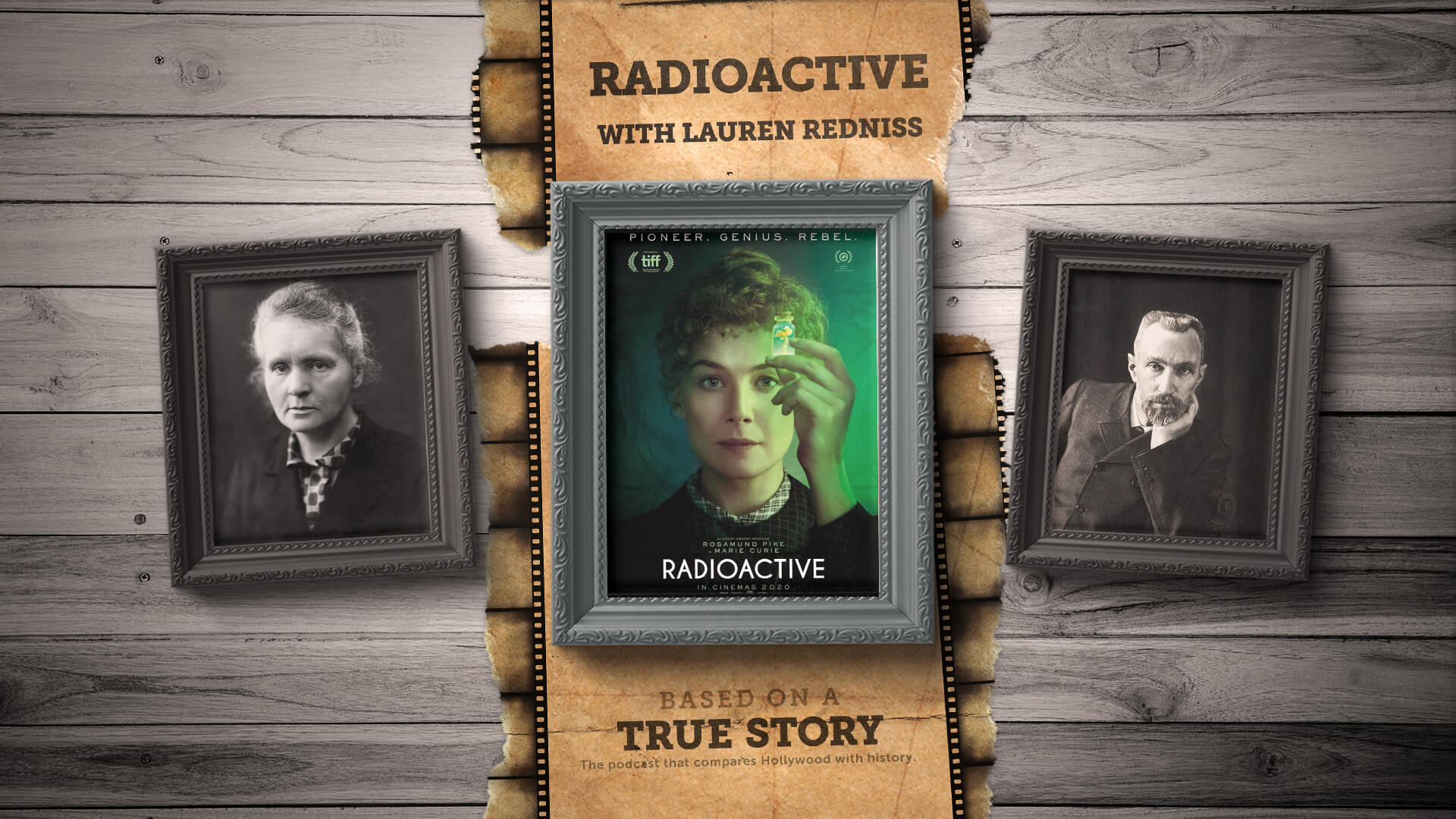Did you enjoy this episode? Help support the next one!
Resources
- Deepwater Horizon [Blu-ray + DVD + Digital HD]
- Deepwater Horizon: A Systems Analysis of the Macondo Disaster
- http://response.restoration.noaa.gov/deepwater-horizon-oil-spill
- https://www.facebook.com/basedonatruestorypodcast/
- https://www.patreon.com/basedonatruestorypodcast/
- http://twitter.com/danlefeb
Disclaimer: Dan LeFebvre and/or Based on a True Story may earn commissions from qualifying purchases through our links on this page.
Transcript
Note: This transcript is automatically generated. There will be mistakes, so please don’t use them for quotes. It is provided for reference use to find things better in the audio.
The movie Deepwater Horizon is named after a drilling rig of the same name. The Deepwater Horizon rig was built by Hyundai Heavy Industries in South Korea. Construction began in December of 1998 and was completed in 2001. It was commissioned by, owned and operated by Transocean. After it was built, BP leased rights to the rig for drilling in the Gulf of Mexico.
Transocean was a major rig operator and touted their safety record—no major incidents for over seven years leading up to 2010. However, underneath this safety record only appeared to be surface level.
Now with such a complex and unsafe operation as deep sea drilling, there’s bound to be some safety concerns. There always will be for such operations. Once you started to dig deeper, Transocean had quite a few safety concerns. For example, from 2005 to 2007, they owned and operated about 30% of the oil rigs in the Gulf of Mexico. Of these rigs, Transocean was responsible for about 33% of safety incidents. Not great, but about what you’d expect.
In 2007, Transocean merged with one of their major rivals, GlobalSantaFe, and while there’s no way to know what effects this merger had to do with safety, we do know how Transocean’s record changed. From 2008 to 2010, Transocean increased their presence in the Gulf with about 42% of the rigs, but their safety incidents went up to 73% of all incidents in the region.
It was in 2008 when the Deepwater Horizon had its worst incident in its short life. The platform started to sink after a section of pipe was accidentally removed. They had to evacuate 77 people from the rig before they were able to stabilize it.
In March of 2008, seven years after British Petroleum rebranded to simply BP, the oil company bought the rights to drill Macondo Prospect. Well, that’s the code name. Officially, it’s MC252 or Mississippi Canyon Block 252. The Mississippi Canyon is the defining underwater canyon in the Gulf of Mexico about forty miles south of Louisiana.
Work began immediately for BP, but it took about a year for them to put together an environmental impact plan for drilling MC252. Even though they had rights to drill, they still had to prove the drilling wouldn’t hurt the environment. In February, BP submitted their initial plan. On April 6th, 2009, the United States Department of Interior decided to give BP a “categorical exclusion” from the National Environmental Policy Act. Basically, BP didn’t need to provide a more detailed plan of the environmental impact of drilling MC252.
The reasoning? A massive oil spill is unlikely.
It took a little while for a rig to be put in place. The rig that was chosen was a rig that has been around the world dating back to the 1970s. Drilling started at MC252 when the Transocean Marianas rig was relocated to the well. Transocean was the name of the company that BP contracted to actually operate the rig.
Less than a month later, Hurricane Ida ripped its way through the Atlantic. Many of the other oil rigs in the Gulf of Mexico were taken apart in anticipation of the storm and moved out of harm’s way. Others, like the Transocean Marianas, stayed put but had their crews abandon the rig as they stopped operations.
On November 9th, 2009, Hurricane Ida hit the rig. There was so much damage that the management at BP and Transocean decided to bring in a new rig. Transocean Marianas was taken away for repairs and Deepwater Horizon was brought in. BP has never released why it was the Deepwater Horizon that was brought in, but based on the facts we do know it’s not too far of a leap to guess.
Valued at over $560 million dollars, Deepwater Horizon was the most powerful drilling rig of its time. In September of 2009, the Deepwater Horizon set a record by drilling the deepest oil well in history at a vertical depth of 35,050 feet. It did this just a couple hundred miles southwest of the Louisiana coast, so a couple months later when they needed a new rig at Mississippi Canyon Block 252 to replace the damaged Transocean Marianas, the nearby Deepwater Horizon was called in for the job.
Another possible reason for picking Deepwater Horizon was the fact that BP had just renewed its contract with Transocean for the rig. This time, in 2009, the contract was renewed for three years, through 2013, at a cost of about $500,000 per day, or $544 million. That was just for the rig. Contracting Transocean for crew, gear and the necessary ships to support drilling operations were extra.
It took a few months to get it set up, but in February of 2010, Deepwater Horizon started drilling at MC252. In the previous decade or so of Deepwater Horizon’s existence, the U.S. Coast Guard had issued 18 pollution citations and had investigated 16 fires and other incidents on the rig. Such citations and fires were actually quite common and point back to just how complex and dangerous deep sea drilling is.
The Deepwater Horizon was a semi-submersible rig, meaning it was floating at the top of the ocean in about 5,000 feet of water. Just above the sea floor was a mechanical device called a blowout protector, or a BOP. This has redundancies to help prevent a blowout. First, there’s a 450-ton series of valves that closes in and seals the drill pipe if activated. Then there’s four blind rams that are designed to close in on each other, sealing the well. Finally, there’s a shear ram that’s designed to close the well by cutting through and sealing the drill pipe.
All of this was about 5,000 feet under the Deepwater Horizon on the sea floor. But the well it was digging was much deeper, with the oil at MC252 being over 13,000 feet below the sea floor. So you can imagine how complex and difficult it is to dig miles beneath the water.
Still, the Deepwater Horizon had successfully drilled almost twice that depth before.
A month after the Deepwater Horizon started drilling, in March of 2010, the rig was starting to experience some problems. There was mud from the drilling procedure falling into the undersea oil formation, at least three different occasions in which the blowout preventer on the bottom of the sea leaking fluids, and even a pipe falling into the well.
Transocean conducted an anonymous survey among the workers on the rig just weeks before the explosion and there was an overwhelming response that indicated they were afraid of the consequences if they reported any issues. Perhaps that was because they were running behind schedule. Perhaps it was because they had gone so long without any serious issues.
At about 10:30 in the morning on April 20th, 2010, the BP Vice President of Drilling, Patrick O’Bryan, flew out to the Deepwater Horizon on a helicopter to celebrate seven years without a lost-time incident with the 126 people on the rig. Many at the time compared the complexity of drilling the 13,000 feet beneath the ocean floor as being on par with the complexities of flying to the moon.
And after only 74 days, they had managed to do just that. Patrick’s trip to Deepwater Horizon was just before they planned to cap off the well at MC252 and stop their drilling. The next step would be to move Deepwater Horizon off the site and bring in a production rig to start harvesting oil and gas.
Late that night, at 9:56 PM CDT, a fire broke out. Not everyone knew about the fire right away. According to reports from Transocean employees, the lights flickered—then there were two strong vibrations that rippled through the rig. The explosion took place at about 11:00 PM CDT.
While they didn’t know it at the time, afterward an internal BP investigation determined what happened was a bubble of methane gas escaped from the well thousands of feet below. It shot up the drill column, expanding and bursting through several seals and barriers before exploding.
The crew nearby had only about five minutes to escape. Oddly, there was an absence of alarms. They had been turned off to help the crews sleep. In the ensuing chaos as the crew was evacuated, 11 were reported missing. 17 were injured.
For the next 36 hours, the fires on the Deepwater Horizon raged on. Finally, on April 22nd, 2010, the Deepwater Horizon rig sank into nearly a mile of water. A day later, the U.S. Coast Guard officially suspended their search for the 11 missing workers. They were presumed dead.
While it was a dreadful disaster, no one had any idea of what was still happening beneath the ocean. It wasn’t until April 26th, almost a full week after the Deepwater Horizon’s explosion, that officials revealed the well was still leaking. 1,000 barrels of oil per day were leaking from the bottom of the ocean and into the water.
Using robots, BP tried in vain to activate the blowout preventer that was still mounted on top of the well. They did this in hopes of sealing the well. They tried unsuccessfully for days. Then, on April 28th, the U.S. Coast Guard warned the public that the leak could become the worst oil spill in U.S. history.
Trying to stop the oil from reaching Louisiana’s coast, the Coast Guard tried setting fire to the oil. They tried to burn it off.
It didn’t work.
On April 30th, the first oil started washing ashore in Louisiana. President Obama reacted to this by banning all oil drilling in new areas—not those existing—while they tried to find out exactly what happened with the Deepwater Horizon.
Over two weeks after the explosion, on May 8th, 2010, BP tried something else to stop the well from leaking. They took a huge metal box and put it on top of the well, 5,000 feet beneath the water.
That didn’t work, either.
But the executives at BP changed their estimate. No longer was it leaking 1,000 barrels of oil a day. Now it was up to 5,000 barrels a day.
Trying something new, on May 10th, BP tried stuffing debris into the leaking well. This included shredded car tires and even golf balls. It was along shot, but they did this trying to slow the leak while putting a metal dome on top of the leak.
Again, it didn’t work.
Meanwhile, as this is going on, the U.S. government was getting involved. They held a congressional hearing with BP, Transocean and Halliburton on May 11th.
Halliburton had cemented the well, and claimed they were innocent because they met BP’s requirements for the project. They blamed Transocean because of the blowout preventer’s failure. But Transocean said they had tested the blowout preventer just a week prior to the explosion. Instead, they blamed both BP and Halliburton for the bad cementing. BP blamed Transocean, saying they were the ones who owned and operated the rig so they’re responsible for performing their duties safely.
Needless to say, nothing came of this except the three companies exchanging blame. No one wanted to accept responsibility for the disaster. Everyone was involved, so it was someone else’s fault.
The next attempt was to use heavy mud from the drilling in a procedure referred to as “top kill”. Over the course of three days, they pumped thousands of barrels of mud into the well in an attempt to plug the leak. It took about three days to do this, but on May 28th they gave up on that. It didn’t work, the oil was pouring out too fast.
On June 2nd, the U.S. government officially announced a criminal inquiry into the oil spill. Two days later, BP managed to get a cap put onto the well that would let them run a majority of the leaking oil to ships on the surface. It wasn’t a permanent fix, but it was better than nothing.
Everyone had their first bit of good news in a long while on June 4th, when a containment cap put in place by BP managed to start capturing about 10,000 barrels of oil per day. At this point that’s only half the amount of oil that’s leaking, but again—better than nothing.
By June 12th, that estimate of how much oil was leaking again was increased. 40,000 barrels per day. A few days later, BP agreed to a $20 billion down payment on compensation for anyone affected by the oil spill.
But the oil was still leaking.
For the next month, BP tried and failed to contain the leak. On July 11th, their best attempt yet happened when they again used robots to remove a cap from the well that was leaking and replacing it with a new containment system. It seemed to be going well, and on July 13th, BP announced they had successfully installed a tightly-fitting containment cap. They still needed to run some tests, but things were looking good.
For the first time in 87 days, BP announced they had stopped the flow of oil on July 15th. But would it hold? Unfortunately, it didn’t. Everyone was forced to leave the area as Tropical Storm Bonnie approached on July 22nd. Fortunately, Bonnie wasn’t as strong as everyone thought it would be so ships were able to return a couple days later.
So far, it was estimated that almost 5 million barrels of oil had leaked into the gulf since the explosion. On August 4th, BP announced their attempts at stopping the oil leak have been successful, but they’ll need to keep pumping more mud into the well to close it permanently.
A month later, and almost exactly five months after the explosion, BP announced the leak had been permanently closed on September 19th, 2010. A final cement plug rendered the well “effectively dead”. BP had spent $10 billion on the clean-up efforts so far.
In the aftermath of the Deepwater Horizon crisis, there was even more investigations and plenty of blame to go around. BP estimated the total cost of the spill was over $40 billion. So it wasn’t a coincidence when BP filed $40 billion worth of lawsuits against Transocean and Halliburton the next year. For the next three years, various oil companies paid settlements as a result of legal claims by those who were affected by the spill.
This culminated in July of 2015 when BP agreed to pay an $18.7 billion settlement with the U.S. government. This was paid to the states of Alabama, Florida, Louisiana, Mississippi, Texas and many other local governments. Unfortunately, though, even these significant amounts of money couldn’t fully repair the environmental damage that was caused. For some, their lives had been irreparably ruined.
To date, the estimated cost of the spill for BP has been over $54 billion. Lost in the midst of all of the legal battles that ensued after the spill was plugged were those who lost their lives on the Deepwater Horizon.
The 11 workers who perished on board were Jason C. Anderson, 35, Aaron Dale Burkeen, 37, Donald Clark, 49, Stephen Ray Curtis, 39, Roy Wyatt Kemp, 27, Karl D. Kleppinger Jr., 38, Gordon L. Jones, 28, Keith Blair Manuel, 56, Dewey A. Revette, 48, Shane M. Roshto, 22, and Adam Weise, 24.
Their bodies were never recovered.
Share this:
- Click to share on Twitter (Opens in new window)
- Click to share on Facebook (Opens in new window)
- Click to share on Reddit (Opens in new window)
- Click to share on Pocket (Opens in new window)
- Click to share on LinkedIn (Opens in new window)
- Click to share on WhatsApp (Opens in new window)
- Click to share on Telegram (Opens in new window)
- Click to email a link to a friend (Opens in new window)
- Click to print (Opens in new window)



